With the current global recession and decline in tech funding, reducing your operating expenses is one of the viable solutions to survive funding winter and keep your company going.
In this article, we’ll provide several best practices to reduce business costs and scale your company while navigating the current economic challenges. We’ll also answer some commonly asked questions about the topic.
Table of Contents
Why Reducing Operating Costs Is Important for Businesses Now?
When done correctly, operating cost reduction can bring several benefits:
- Increased profits. When your operating business expenses are low, you’ll have bigger chances to avoid loss and increase profit margins.
- Better cash flow management. In order to save costs, you need to assess which business expenses are essential and which ones aren’t necessary. This valuable information helps you manage your cash flow more effectively.
- Growth opportunity. A healthy financial state means you’ll have plenty of cash to invest for your business growth.
8 Ways to Reduce Operating Expenses
If you’re not sure where to start, we have plenty of cost-saving best practices you can implement instantly.
1. Identify Inefficiencies in the Processes
The first step you need to take is to review your business and finance workflows from start to finish. Then, identify any inefficient processes that may result in unnecessary spending.
A study shows that inefficient accounts receivable (AR) processes can cost your business $300,000 in late payments and 720 hours per year chasing collections.
This is also the case with accounts payable (AP) processes. The average Southeast Asian company spends 520 hours every year on manual tasks and $3.50 on average to process a vendor invoice.
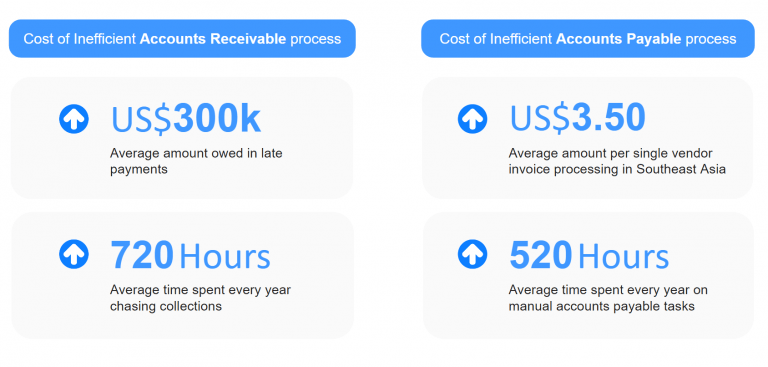
If you take a look at the AP workflow graph below, you’ll see tons of manual processes that can be improved.
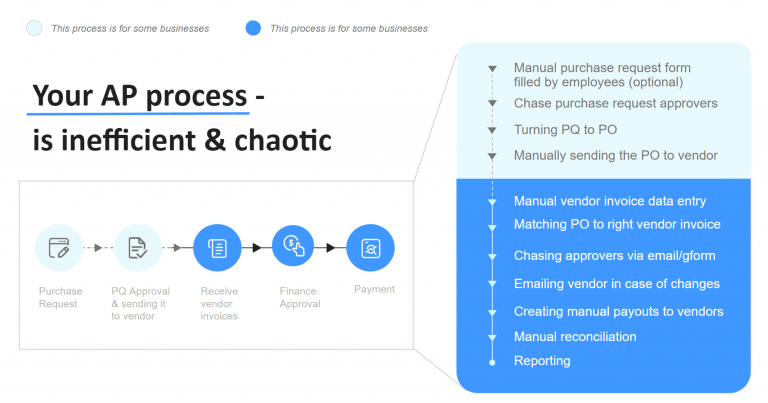
The same thing can be said about your AR workflow.

The good news is, automation software like Peakflo can help you streamline AR and AP workflows. Not only does it allow you to keep more of your hard-earned money, automation also helps you save time better spent on other crucial business tasks.
2. Negotiate with Vendors
Once you’ve listed all inefficient processes in your company, another cost-saving measure you can take is to negotiate with vendors and suppliers.
Here are some best practices to consider:
- Contact your phone and internet providers and ask them for a discount.
- When looking for a new product or service, compare prices from different vendors and choose the most affordable one.
- Knowing the industry-standard price of a product or service can also put you in a better place when negotiating with a supplier.
With Peakflo, real-time vendor communication has never been more straightforward. You can send email, SMS, or WhatsApp to negotiate on prices and send purchase orders (POs) without leaving our dashboard.
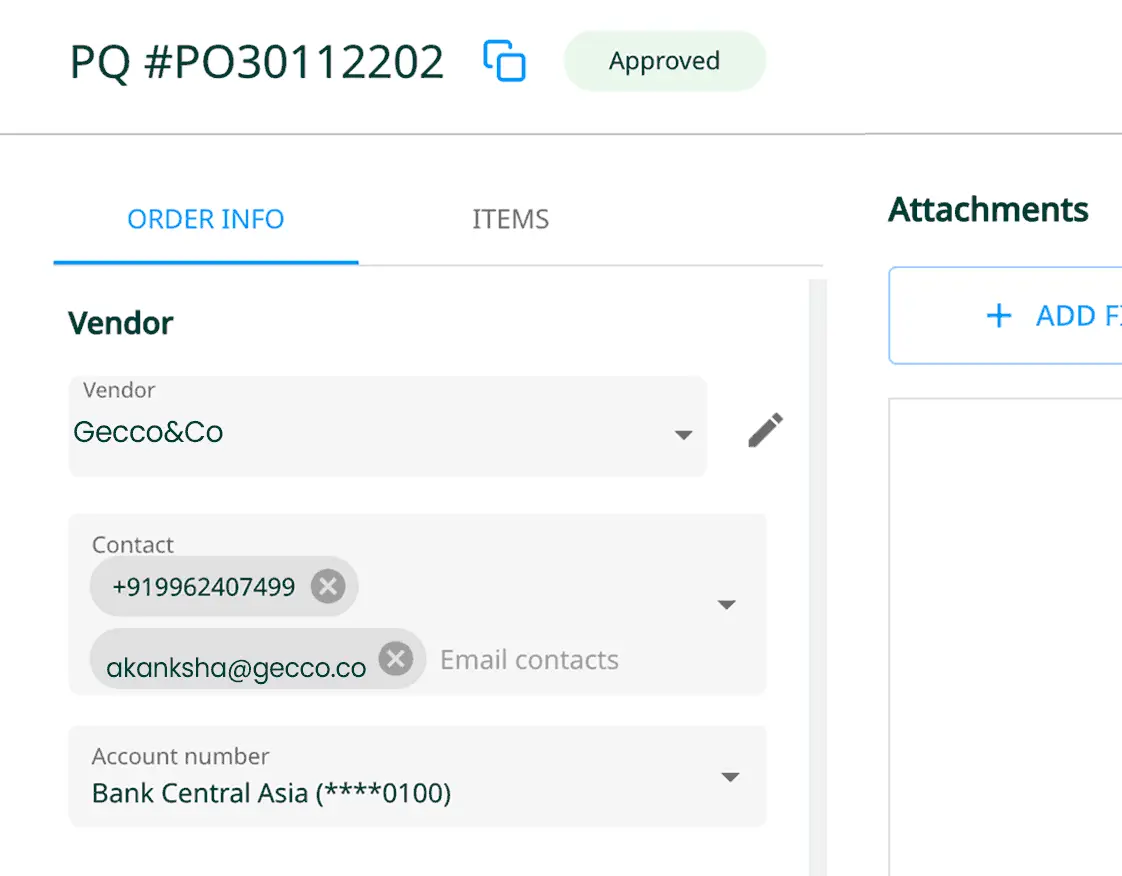
3. Pay Bills In Advance
Some vendors offer lower prices when you pay in advance rather than in installments. If you have the cash, take advantage of this payment method.
Initially, the discount might seem small. However, when you calculate your expenses during the month-end closing and year-end closing, the amount can really add up. For instance, your annual operating costs are $500,000. If you can save 5% of it, that equals to $25,000 in reduced expenses.
On top of that, paying invoices early enables you to avoid interests, late fees, and other forms of penalties.
Peakflo has plenty of features that can help you pay bills in advance:
- Streamline approvals. Send customizable, automated, multi-level approval reminders in preferred channels like WhatsApp and email. The person in charge can then approve on mobile for a faster approval process.
- Streamline PO to bill. Our auto-fill fields help you make POs and bills faster. Once created, our system will automatically match the PO with the bill so you can send the PO to the vendor in no time, without errors.
- Streamline payments. Through our user-friendly e-Wallet and various payment getaways, you can pay the vendor with ease. You can also schedule the payment date or even pay in bulk.
4. Control Expenses
There’s no better way to reduce operating costs than to control your business expenses.
In most organizations, each department is given their own budget to cover operating expenses. The problem is, without the help of software, it can be hard to set the budget limit and track spending.
With Peakflo, you can set up one-time or recurring budgets and configure the budget limit for each department. After that, you can tag each team member in the workspace. Once the limit is reached, our system will automatically send notifications to all assigned members.
5. Switch to Remote Working
Ever since the pandemic, more and more companies have adopted the remote working policy. This method allows you to save costs like office rents, commuting expenses, and utility bills.
However, remote working also has some drawbacks. The biggest challenges people face with remote working include internal communication, task management, and performance tracking.
This is the area where Peakflo excels. Our all-in-one dashboard ensures:
- Real-time team collaboration. All departments, from finance and account managers to collections and sales teams, can leave comments or important notes and mention co-workers on bills and invoices to collaborate in real time.
- Better task management. Account managers can set custom tasks with daily email reminders and one-click actions for following up late-paying customers, sending a letter of demand, and creating vendor invoices.
- Improved productivity. CFOs and managers can easily track their team’s collection efficiency and strategize better on how to improve each member’s performance.
6. Collect Payments Faster
Payment collections are essential for any company’s working capital. Receiving payments on time makes sure you won’t be running out of cash to cover operating business expenses.
In contrast, late-paying customers can significantly hamper your cash flow and financial health. That’s why having strong payment terms and improving collection efficiency are necessary to keep your business running.
Peakflo can help with:
- Streamlining collections. Set up automated workflows based on an escalation matrix, such as multi-channel payment reminders, legal escalation, and letter of demand.
- Keeping track of collection status. Stay on top of invoice status and get insights into customers’ payment tendency. Based on those patterns, you can improve your current workflows and get paid faster.
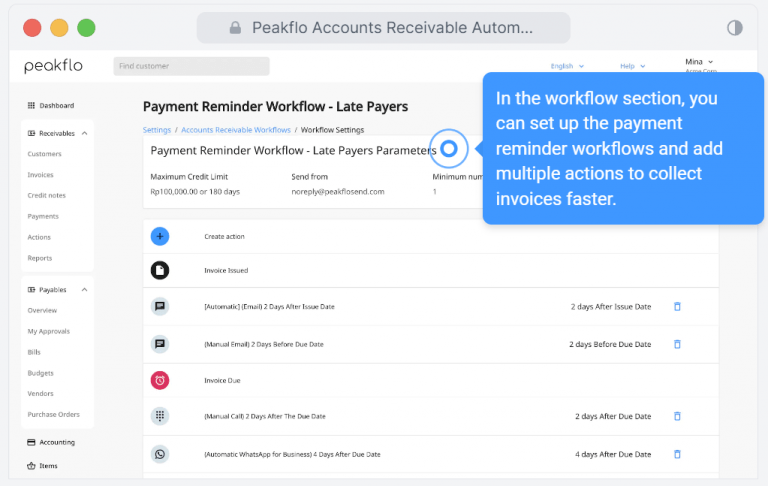
Take a product tour and book a free consultation to find out how much your business
can save with Peakflo.
7. Keep Track of Cash Flows
Most small businesses are struggling with cash flows. This issue mainly happens because they don’t have enough time and manpower to track and record invoices and bills.
If companies don’t track their cash flows, how is it even possible to reduce expenses? The answer is impossible, unless they implement automation tools like Peakflo.
We have cash flow analytics with AI predictions. This helps CFOs and finance leads forecast future cash inflows and outflows more strategically, and plan for more profitable financial strategies in the coming period.
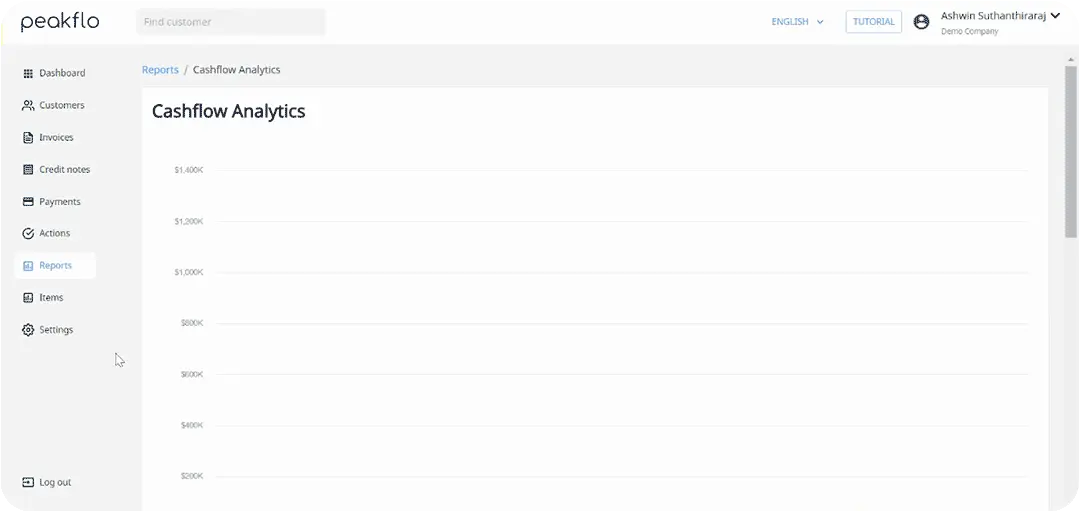
8. Automate As Many Tasks As Possible
Manual finance processes are a waste of your time, effort, and money. Not to mention that it is prone to costly human errors.
For that reason, using automation software is crucial if you want to cut operating expenses and use the money to scale your business instead.
With Peakflo’s time-saving features, you can automate almost all financial tasks that require the most man-hours, including procure-to-pay, collections, and reporting. You can also integrate Peakflo with your accounting software for automated, faster reconciliation.
If you need more resources regarding this topic, download our free Guide to Automation for CFOs in 2023 eBook now.
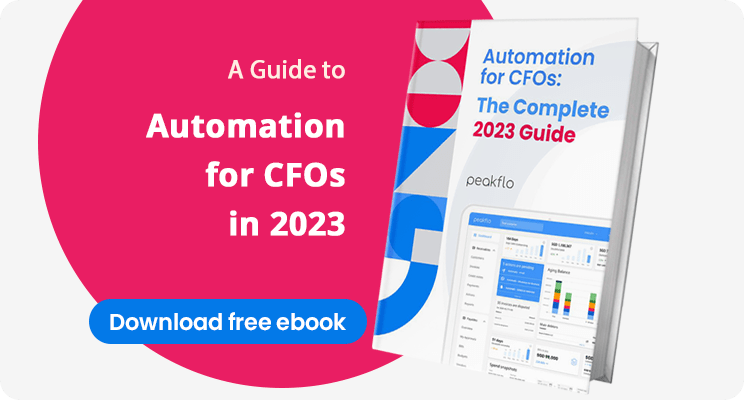
Frequently Asked Questions
An operating cost is a type of expense required to run a business on a daily basis.
There are fixed costs, variable costs, operating costs, and direct costs.
What Are the Examples of Operating Costs?
Operating costs include office supplies, office rents, employee wages, internet bills, business trips, and vendor payments.
How to Calculate Operating Costs?
To calculate your operating cost ratio or gross margin, use this formula:
Operating Cost Ratio = (Operating Expenses ÷ Total Revenue) x 100.
Let’s say your company earns $1,000,000 in annual revenue and spends $300,000 in annual expenses. That means, your gross margin will be ($300,000 ÷ $1,000,000) x 100 = 30%.
The operating cost ratio standard can differ from one industry to another. To find out the rough estimation, check out this list of gross margin by sector (US).










![Why AI Sales Calls Are Making Good Sales Reps Even Better [2025 Guide] ai sales calls](https://blog.peakflo.co/wp-content/uploads/2025/09/65168cf6-3001-4733-8cbc-12d5684cf449-218x150.webp)


































